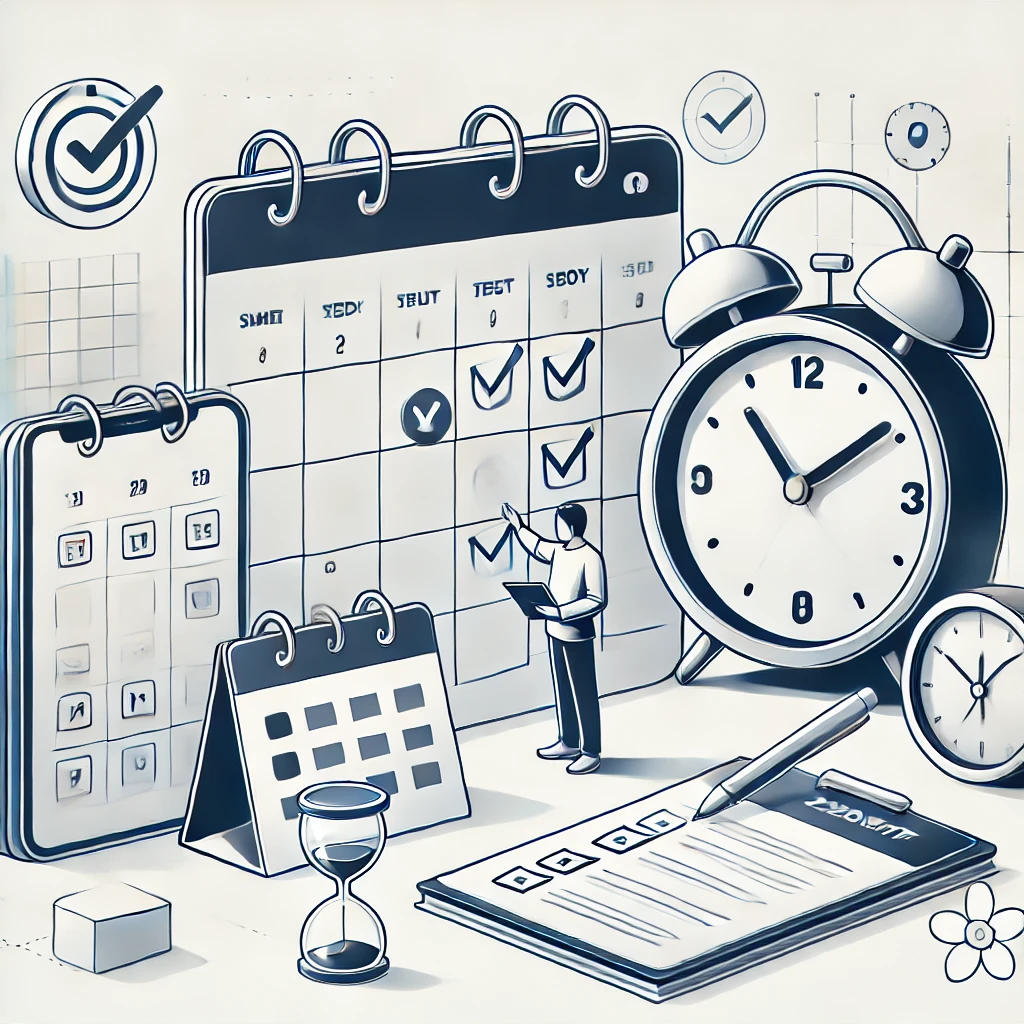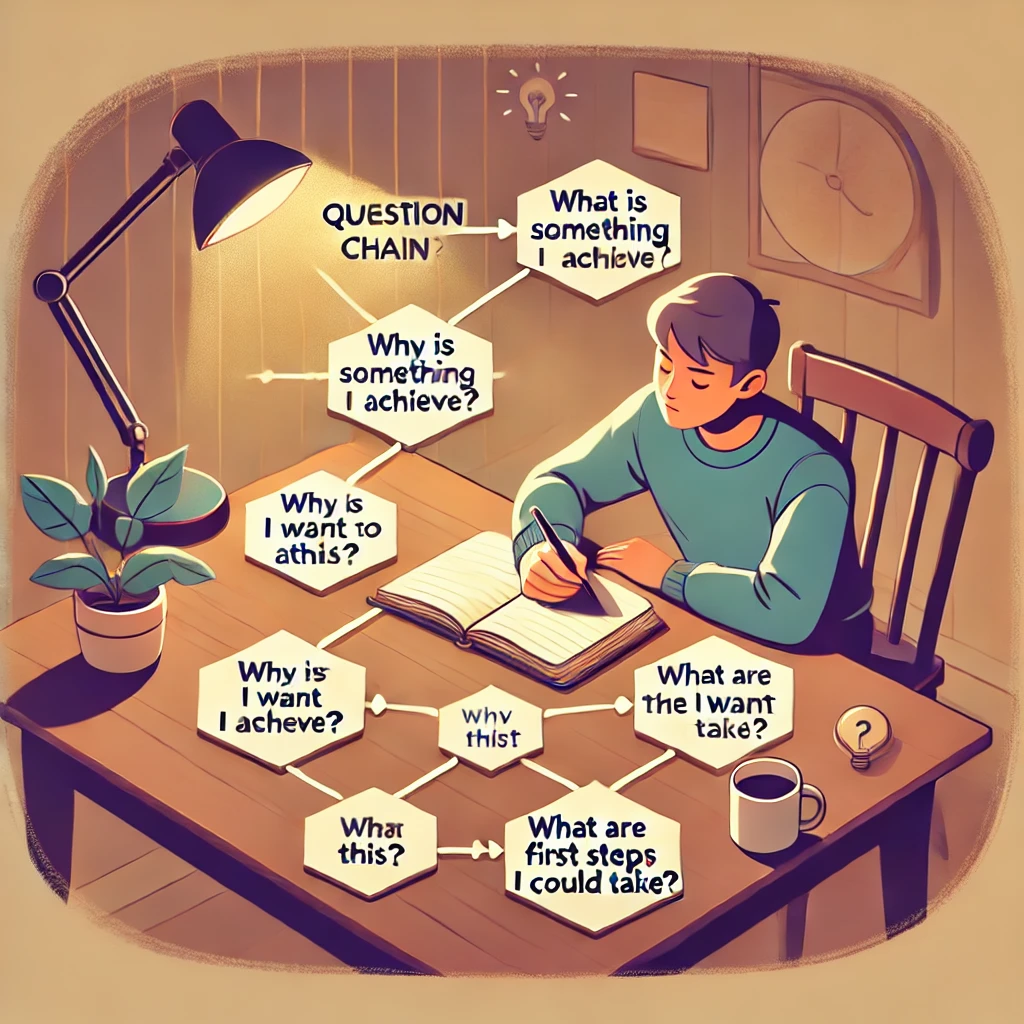Time Management: The Art of Taking Control of Your Day
Ever feel like there aren't enough hours in the day? You're not alone. Effective time management isn't about squeezing more tasks into your schedule – it's about making intentional choices with the time you have. Let's explore practical strategies to revolutionize how you manage your time.
Start With a Time Audit
Before you can improve your time management, you need to know where your time is actually going. For one week, track every activity in 30-minute blocks. You might be surprised to discover how much time is lost to:
- Unnecessary meetings
- Social media scrolling
- Multitasking
- Unplanned interruptions
The Power of Prioritization
Not all tasks are created equal. Use the Eisenhower Matrix to categorize your tasks:
Urgent & Important: Do immediately
Important but Not Urgent: Schedule it
Urgent but Not Important: Delegate if possible
Neither Urgent nor Important: Eliminate it
Time-Blocking: Your Secret Weapon
Instead of working from an endless to-do list, assign specific time blocks for different activities. This includes:
- Deep work sessions
- Email management
- Creative thinking
- Personal time
- Buffer time for unexpected issues
The 80/20 Rule in Action
Apply the Pareto Principle to your work: 20% of your efforts typically generate 80% of your results. Identify your high-impact activities and prioritize them during your peak energy hours.
Productivity Enhancers
Focus Sessions
Use the Pomodoro Technique: 25 minutes of focused work followed by a 5-minute break. This maintains high concentration while preventing burnout.
Energy Management
Map your tasks to your natural energy levels:
Morning: Complex problem-solving
Afternoon: Administrative tasks
Evening: Planning and review
Digital Minimalism
- Turn off notifications
- Check email at scheduled times
- Use website blockers during focus sessions
- Keep your phone in another room during deep work
The Art of Saying No
Time management often comes down to choice management. Learn to:
- Decline non-essential meetings
- Set clear boundaries
- Delegate effectively
- Avoid overcommitment
Common Time Traps to Avoid
Perfectionism
Set realistic quality standards. Not every task needs to be perfect – sometimes good enough is good enough.
Meeting Overload
- Question if you really need to attend
- Request an agenda beforehand
- Suggest shorter meeting times
- Stand-up meetings for quick updates
Multitasking Myth
Focus on one task at a time. Studies show multitasking can reduce productivity by up to 40%.
Creating Sustainable Systems
Morning Routine
Start your day with intention:
- Plan your top priorities
- Review your schedule
- Set realistic goals
Weekly Planning
Dedicate time every Sunday or Friday to:
- Review upcoming commitments
- Plan major tasks
- Identify potential challenges
- Schedule buffer time
The Power of Automation
Identify repetitive tasks that can be automated:
- Email templates
- Bill payments
- Social media posting
- Report generation
Measuring Success
Track these indicators to gauge improvement:
- Task completion rates
- Focus session duration
- Number of interruptions
- Energy levels throughout the day
- Quality of work output
Remember: Progress Over Perfection
Time management is a skill that develops with practice. Start with one or two strategies and build from there. The goal isn't to become a productivity machine but to create space for what truly matters in your work and life.
Action Steps to Take Today:
1. Conduct your time audit
2. Identify your top three time-wasters
3. Schedule tomorrow's most important task
4. Set up your first time-blocking schedule
5. Choose one productivity tool to implement
Your time is your most valuable resource. Manage it wisely, and you'll not only accomplish more but enjoy greater peace of mind and satisfaction in both your professional and personal life.
Battling Time Poverty: Strategies for Effective Time Management
Time poverty—the feeling of never having enough time to accomplish everything—is a growing issue in our fast-paced world. It can lead to stress, burnout, and reduced productivity. However, by implementing effective time management strategies, you can reclaim your time and focus on what truly matters.
Here are actionable strategies to combat time poverty and make the most of your days:
---
1. **Prioritize Ruthlessly**
Not all tasks are created equal. Use the Eisenhower Matrix to categorize tasks based on urgency and importance:
- **Important and Urgent:** Do these immediately.
- **Important but Not Urgent:** Schedule these for later.
- **Not Important but Urgent:** Delegate if possible.
- **Not Important and Not Urgent:** Eliminate these tasks altogether.
By focusing on what truly matters, you can free up time for high-value activities.
---
2. **Learn to Say No**
Saying yes to everything spreads your time and energy too thin. Politely decline commitments that don’t align with your priorities. Remember, every yes is a no to something else.
---
3. **Use Time Blocking**
Allocate specific blocks of time for different tasks or activities. Treat these blocks as appointments, ensuring you dedicate focused periods to work, rest, and personal growth. This method reduces decision fatigue and increases productivity.
---
4. **Limit Multitasking**
Multitasking can make you feel productive, but it often reduces efficiency and increases errors. Focus on one task at a time to complete it more effectively and reduce the mental strain of switching between activities.
---
5. **Automate and Delegate**
Identify repetitive tasks and look for ways to automate them. For example, use scheduling tools for meetings or apps for reminders. Delegate tasks to others when possible to focus on higher-priority responsibilities.
---
6. **Practice the Two-Minute Rule**
If a task takes less than two minutes, do it immediately. This simple rule prevents small tasks from piling up and overwhelming your to-do list.
---
7. **Track Your Time**
Spend a week tracking how you use your time. This exercise can reveal patterns and time-wasters, helping you make informed adjustments to your schedule.
---
8. **Create Buffer Times**
Avoid back-to-back scheduling by adding buffer times between tasks. These breaks allow you to recover mentally and handle unexpected delays without derailing your day.
---
9. **Set Boundaries**
Protect your time by setting clear boundaries. For instance, establish work hours, limit screen time, and communicate your availability to others.
---
10. **Reflect and Adjust**
Regularly review your schedule and progress. Are your current strategies helping you achieve your goals? If not, make adjustments. Continuous reflection ensures your time management evolves with your needs.
---
Conclusion
Time poverty doesn’t have to control your life. By adopting these time management strategies, you can regain control of your schedule, reduce stress, and focus on what truly matters. Remember, time is your most valuable resource—use it wisely and intentionally.
Essential Tools for Effective Time Management
Effective time management is crucial for achieving your goals and maintaining a balanced life. With the right tools, you can plan, prioritize, and execute tasks more efficiently. Here’s a comprehensive guide to tools that can help you master your time management skills.
---
1. **Calendar Tools**
Calendars are essential for scheduling and organizing your time. Popular options include:
- **Google Calendar**: Sync across devices, set reminders, and share schedules with others.
- **Outlook Calendar**: Ideal for integrating with email and work tasks.
- **Apple Calendar**: A simple and effective tool for iOS users.
Use calendars to block time for tasks, appointments, and personal activities to ensure balance.
---
2. **Task Management Apps**
Task management apps help you organize and prioritize your to-do list. Some top options are:
- **Todoist**: A user-friendly app with task prioritization and progress tracking.
- **Microsoft To Do**: Integrates seamlessly with Microsoft tools.
- **Trello**: A visual tool using boards and cards to organize tasks and projects.
These apps ensure that no task slips through the cracks.
---
3. **Time Tracking Tools**
Understanding how you spend your time is key to improvement. Time tracking tools can help you identify inefficiencies:
- **Toggl Track**: A simple and effective app for logging time spent on tasks.
- **RescueTime**: Analyzes your daily habits and provides reports on productivity.
- **Clockify**: A free time tracker and timesheet app for teams and individuals.
Use these tools to pinpoint areas where you can save time.
---
4. **Note-Taking Tools**
Capture ideas, notes, and tasks quickly with these tools:
- **Evernote**: Organize notes, images, and documents in one place.
- **OneNote**: A versatile tool for creating and sharing detailed notes.
- **Notion**: Combines note-taking with task management for an all-in-one solution.
Note-taking tools help you stay organized and reduce mental clutter.
---
5. **Focus and Distraction-Blocking Tools**
Minimize distractions and maintain focus with these tools:
- **Forest**: Grow a virtual tree by staying off your phone while working.
- **Freedom**: Blocks distracting websites and apps for focused work sessions.
- **Cold Turkey**: A robust website and app blocker for deep work.
These tools ensure your time is spent productively.
---
6. **Habit Tracking Tools**
Build better habits to improve your time management:
- **Habitica**: Turn habits into a game with rewards for completing tasks.
- **Streaks**: Track daily habits and maintain consistency.
- **Loop Habit Tracker**: A free and simple app to monitor habit formation.
Habit tracking tools reinforce positive behaviors that enhance time efficiency.
---
7. **Collaboration Tools**
For team projects, collaboration tools keep everyone on the same page:
- **Slack**: Streamlines communication with channels and direct messaging.
- **Asana**: Tracks project progress, assigns tasks, and meets deadlines.
- **Monday.com**: A visual platform for managing projects and workflows.
Collaboration tools prevent miscommunication and streamline teamwork.
---
8. **Mind Mapping Tools**
Organize thoughts and plan effectively with visual tools:
- **MindMeister**: Create and share mind maps for brainstorming and planning.
- **Coggle**: Simple, user-friendly mind-mapping software.
- **XMind**: A professional tool for structured and creative mapping.
Mind maps help clarify complex ideas and ensure thorough planning.
---
9. **Automation Tools**
Save time by automating repetitive tasks:
- **Zapier**: Connects apps and automates workflows.
- **IFTTT (If This Then That)**: Simplifies automation with easy-to-create applets.
- **Calendly**: Automates scheduling by syncing calendars and sending invites.
Automation tools free up time for more meaningful work.
---
10. **Physical Tools**
Sometimes, simple physical tools can make a big difference:
- **Planners and Journals**: Great for writing down tasks, goals, and reflections.
- **Timers (e.g., Pomodoro Timers)**: Break work into focused intervals with timed breaks.
- **Whiteboards**: Ideal for visualizing tasks and tracking progress in real time.
---
Conclusion
Effective time management begins with the right tools. By incorporating these digital and physical resources into your routine, you can plan smarter, focus better, and achieve your goals with less stress. Experiment with these tools to find what works best for your needs and preferences. Time is your most valuable resource—manage it wisely.
The Psychology of Procrastination: Understanding Your Delay Patterns
Ever found yourself scrolling through social media when an important deadline looms? Or perhaps you're organizing your desk for the third time this week instead of tackling that crucial project? Welcome to the complex world of procrastination – a behavior that's far more nuanced than simple laziness.
The Science Behind Procrastination
Procrastination isn't just poor time management; it's an emotional regulation problem. When we procrastinate, we're not avoiding the task itself – we're avoiding the negative emotions associated with it. Whether it's fear of failure, perfectionism, or feeling overwhelmed, our brain chooses immediate emotional relief over long-term benefits.
Common Procrastination Patterns
The Perfectionist Delay
You wait for the "perfect" moment or condition to start. The irony? This pursuit of perfection often leads to rushed, last-minute work that's far from perfect.
The Overwhelm Freeze
When faced with large tasks, you become paralyzed by their magnitude. The project seems too big, too complex, or too important, leading to avoidance rather than action.
The False Productivity Trap
You busy yourself with less important tasks, creating an illusion of productivity. Organizing emails or cleaning your workspace feels productive, but it's really just sophisticated procrastination.
The Deadline Adrenaline Rush
You convince yourself you work better under pressure, deliberately delaying until the last minute. While the adrenaline might feel energizing, this pattern often produces inconsistent results and unnecessary stress.
Understanding Your Personal Triggers
Emotional Triggers:
- Fear of failure
- Anxiety about success
- Feeling overwhelmed
- Perfectionism
- Need for control
Situational Triggers:
- Unclear instructions
- Lack of immediate consequences
- Too many choices
- No accountability
- Environmental distractions
Breaking the Pattern
1. Acknowledge the Emotion
Instead of fighting your procrastination, get curious about it. What feeling are you trying to avoid? Understanding the root cause is the first step to addressing it.
2. Use Time-Boxing
Break your work into 25-minute focused sessions. This makes tasks feel less overwhelming and provides natural breaks for recovery.
3. Create Implementation Intentions
Instead of vague plans, make specific ones: "When X happens, I will do Y." For example, "When I finish my morning coffee, I will work on the project for 30 minutes."
4. Start Small
Begin with just five minutes of work. Often, starting is the hardest part – once you begin, you'll likely want to continue.
The Role of Self-Compassion
Harsh self-criticism about procrastination often makes the problem worse. Practice self-compassion while maintaining accountability. Remember: everyone procrastinates sometimes; the goal is to manage it, not eliminate it entirely.
Building Better Habits
1. Design Your Environment
Remove obvious distractions and create a space that supports focused work.
2. Use Social Commitment
Share your goals with others or find an accountability partner.
3. Track Your Patterns
Keep a procrastination journal to identify triggers and patterns.
4. Celebrate Small Wins
Acknowledge progress, no matter how small, to build momentum.
Moving Forward
Remember that changing procrastination patterns takes time and patience. Each small victory in choosing action over delay rewires your brain for better habits.
Action Steps:
1. Identify your primary procrastination pattern
2. Track your triggers for one week
3. Choose one anti-procrastination strategy to implement
4. Set up your environment for success
5. Find an accountability partner
The key to overcoming procrastination isn't willpower – it's understanding. When you recognize your patterns and address the underlying emotions, you can develop strategies that work with your psychology rather than against it.
Your Next Step
Start now by identifying one task you've been avoiding. What emotion is driving that avoidance? Take five minutes – just five – to work on it. Sometimes, that's all it takes to break the pattern and build momentum toward your goals.
Remember: Progress isn't about perfection; it's about consistent, imperfect action.
When Is A Change Going to Come
Let me share some thoughtful encouragement for someone asking that deeply personal and often poignant question.
The yearning behind "When is a change going to come?" often echoes Sam Cooke's powerful song - it speaks to a universal human experience of waiting, hoping, and sometimes struggling for transformation, whether personal or societal.
I would say: Change is actually already in motion, even when we can't see it clearly. Like a seed growing beneath the soil, the first signs may be invisible but the process is very much alive. Every small step you take, every time you choose hope over despair, you're actively participating in creating that change.
Remember that some of history's most profound changes seemed impossible until they happened. The Berlin Wall stood firm until the day it didn't. Apartheid seemed permanent until it wasn't. Personal transformations follow similar patterns - sometimes we're building strength and momentum even when progress feels slow.
Rather than waiting for change to come to you, you might ask: "What small change can I initiate today?" Even tiny actions - reaching out to one person, learning one new skill, taking one step toward a goal - create ripples that grow over time. Change often happens gradually, then suddenly.
The question isn't really "when" but "how" - and you already have more power to shape that answer than you might realize. What matters most is that you keep moving forward, keep hoping, keep working toward your vision, even when the path seems long.
What specific change are you hoping to see? Sometimes talking about it more concretely can help us see the stepping stones toward making it real.
Centered YouTube Video Showcase
Welcome to Think On The Net Video Showcase








